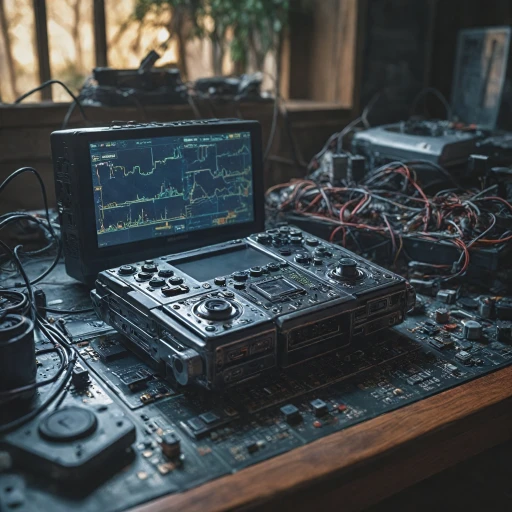The Evolution of Guitar Hero
Tracing the Guitar Hero Legacy in the Arcade World
The story of Guitar Hero, the iconic rhythm game, commenced years ago when it first hit the home console market, captivating music lovers with its unique gameplay. However, the allure of this game intensified as it transitioned from the console environment to the vibrant scene of video arcades. The arcade version of Guitar Hero developed into an engaging experience, blending accessibility with a thrill that only an arcade machine could provide.
The rise of Guitar Hero in arcade gaming was not an isolated phenomenon; it was a part of a broader movement where arcade games, like cabinets filled with the likes of Pac Man and pinball machines, carved a niche in pop culture. Now, arcade cabinets housing Guitar Hero offer players a chance to relive or experience afresh the joy of old-school competition and camaraderie. In arcades across the United States, fans could gather around the cabinet, experiencing the raw thrills of playing beloved songs from "III Legends of Rock" in a competitive setting that emphasized player collaboration and rivalry.
These machines inspired the same kind of excitement historically reserved for classic games such as basketball arcade and pinball. Despite the shift toward digital and online gaming, the allure of physical game cabinets remains strong. This melding of nostalgia and contemporary gameplay mechanics highlights the enduring appeal of arcade gaming. For players today, the chance to engage with titles like "Hero Tour" in their physical form offers a unique way to score location, achieve high scores, and gain the admiration of their peers—much like arcade legends of the past.
To delve into this blend of past and present, explore the
retro gaming consoles that have similarly captivated generations and continue to influence gaming today.
Gameplay Mechanics and Features
Immersive Gameplay and Unique Features
Exploring the Guitar Hero arcade experience is a journey filled with captivating gameplay mechanics and distinct features. Unlike the console versions, the arcade setup offers players a raw sense of immersion, thanks to the guitar-shaped controllers and impressive sound systems embedded within the arcade machines. The thrill of strumming along to popular songs is amplified when standing at the hero arcade cabinet, especially as the booming speakers around you make the experience resonant and engaging.
The gameplay in the Guitar Hero arcade game focuses on allowing players to simulate the performance of legendary rock tunes. With a setlist that includes classics from Guitar Hero III Legends, players are tasked with matching notes as they appear on the screen, thereby chasing scores and maximizing their performance frequency. The reaction score feature allows players to see instant feedback on their play, creating an immersive loop of challenges and rewards.
Additionally, the nostalgic feeling reminiscent of past video arcade experiences, akin to playing a Pac Man or pinball game years ago, presents a return to simpler yet thrilling gaming times. The hero guitar's renewed authenticity when compared to basketball arcade games or other arcade legends adds to the overall allure, offering players a compelling reason to return repeatedly.
Those interested in tapping into the arcade thrills and exploring where to enjoy an authentic arcade machine experience might benefit from locating nearby retro gaming stores and arcades. Consult resources like
Finding the Best Retro Gaming Store Nearby to discover the closest score location that prides itself on offering these arcade marvels. The convergence of tailored gameplay mechanics and advanced features in the Guitar Hero arcade machines not only captivates the crowd but also defines a space where music and gaming collide delightfully. The enthusiasm for this innovative iteration of Guitar Hero reflects its significant impact on the gaming console industry—an aspect that continues to inspire generations of players.
Comparing Arcade and Console Versions
Bringing the Arcade Vibe into the Living Room
In the world of gaming, both arcade machines and console versions of Guitar Hero have captivated millions with their pulsating, rock-inspired gameplay. However, the differentiation between the raw thrills of the arcade cabinet and the home console experiences offer unique elements for players.
For those who have spent time in a bustling video arcade, the hero arcade experience is overwhelmingly sensory. As players, individuals are enveloped by the combination of flashy lights and amplified sounds, analogous to standing on stage during a rock concert. A solidly built arcade cabinet, often set next to legends like Pac Man or pinball machines, provides a sturdy platform designed to withstand the enthusiastic frenzy that accompanies competitive play. The visceral reaction score sounds of the arcade game instigate a thrilling atmosphere where players and spectators alike share in the excitement.
On the other hand, home consoles provide a different, yet equally engaging experience. The appeal of Guitar Hero on consoles is in its accessibility—allowing players to dive into the world of rock and explore songs from III Legends of Rock or embark on epic Hero Tour challenges without ever leaving home. While there is a lack of the arcade's physical cabinet and environmental immersion, consoles often offer a more personalized and extensive selection of songs. The social and casual nature of console gaming fosters an inviting setting for friends and family, creating its own kind of raw thrills in the intimacy of one's living room.
Ultimately, whether through an arcade hero machine or a console, Guitar Hero bridges the gap between video game enthusiasts and music lovers. By understanding the respective charms of each playing format, one can appreciate options that cater to varied preferences—be it the nostalgia of the classic
arcade machine or the convenience of home gaming.
The Social Aspect of Arcade Gaming
The Social Element of Gaming in Arcades
Arcades have long held a special place in the heart of gaming culture. The Guitar Hero arcade experience enhances this nostalgia by fostering communal interactions. An arcade is more than just a place to play video games; it’s a gathering spot where the energy and thrill are palpable.
In an arcade game setting, the social aspect is magnified as players and spectators gather around the arcade cabinet. The visual and auditory appeal of the game, from the bright colors of the arcade machine to the captivating songs of Guitar Hero, create a vivid atmosphere that draws in both seasoned enthusiasts and curious newcomers.
The allure of arcade games like Guitar Hero resonates with the raw thrills from years ago when games like Pac-Man and pinball brought people together. In this setting, the Guitar Hero tour becomes a shared experience. As the player strums the hero guitar and aims for the highest score location, the reaction score, boosted by cheers and applause, fuels the sense of competition and camaraderie.
With Guitar Hero, like basketball arcade games, players are not only competing against the game itself but also performing in front of an audience. This turns each play session into a mini-concert of sorts. Unlike the more solitary experience of home gaming, the arcade offers a space where people can rejoice in one another’s successes and laugh off the occasional failures.
From years ago in the United States, video arcade games have been a platform for social interaction, and Guitar Hero seamlessly integrates into this tradition. By combining the elements of rock and electronic gaming, Guitar Hero adds a musical dimension that both veterans and novices can enjoy. The hero arcade format revitalizes the opportunity for shared gaming experiences, making it a cornerstone of the video arcade ecosystem.
Impact on the Gaming Console Industry
Guitar Hero's Influence On Console Gaming
The Guitar Hero arcade experience left a significant mark on the gaming console industry. Known for its innovative approach and engaging gameplay, the series brought the mechanics of rhythmic gaming to the forefront of video game design. The transition from arcade cabinets to home consoles allowed players to bring the thrill of being a rock hero into their living rooms, which profoundly influenced game development strategies.
While Guitar Hero arcade machines debuted with the excitement of live play, the video game console versions expanded on the experience. This shift saw even more songs and features integrated, as developers optimized the game for user-friendly home entertainment. Video consoles like the PlayStation 2 and Xbox 360 became prominent platforms to accommodate the Guitar Hero enthusiasm, inspiring a surge in life-like peripherals and interactive gameplay in home systems.
Such innovation had ripple effects across the industry. Gaming companies realized the appeal of music-based interactive entertainment, leading to the diversification of game genres available on console platforms. This pattern sparked the development of other music and rhythm-based games like "Rock Band," further growing a new market segment.
Despite being introduced years ago, Guitar Hero's influence persists. The arcade-inspired game continues to resonate within the gaming community, as players reminisce about its heyday. Even the nostalgic feel of the game meets modern adaptations, indicating the potential for future iterations and technology innovations within gaming consoles.
Understanding this impact helps contextualize how raw thrills from a hero arcade machine have shaped and continue to reshape the dynamics of gaming console strategies.
Future Prospects for Guitar Hero
The Road Ahead for Guitar Hero's Arcade Experience
As we examine the evolving landscape of arcade games, Guitar Hero remains a standout in the realm of music video games. Its influence on the gaming console industry is undeniable. With dedicated arcade cabinets found across the United States, the game continues to captivate players, encouraging them to immerse themselves in the thrill of music and rhythm.
While the traditional console market has seen various iterations of the Guitar Hero series, the arcade version retains a unique charm. The raw thrills of standing before a machine, holding a hero guitar, and playing iconic songs has a certain allure that is hard to replicate at home. Moreover, it offers a communal atmosphere reminiscent of the golden days of arcade gaming, where reaction scores and high scores were the ultimate bragging rights.
Looking forward, there is potential for innovation within the arcade sector. Advances in technology could lead to enhanced features and functionalities, making modern arcade games more engaging than ever. While we cannot predict the exact trajectory, the integration of newer themes, such as hero tours or iii legends rock, could introduce Guitar Hero to a broader audience.
Furthermore, the impact of social interaction in boosting the appeal of arcade games should not be underestimated. The arcade environment often facilitates unique social connections, encouraging shared experiences that extend beyond individual gameplay.
With the gaming industry constantly evolving, it remains to be seen how Guitar Hero will adapt to changing player preferences. However, the legacy of this iconic arcade game is likely to persist, continuing to inspire nostalgia and excitement among new generations of players. As long as there’s a guitar and a game to play, the journey of Guitar Hero will forge ahead.

